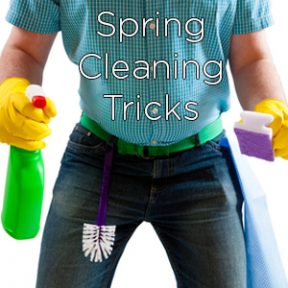 There seems to be a lot of confusion about what courses to take at a community college. This confusion VERY OFTEN leads to taking the wrong courses, which pushes out your graduation date, which costs you more money. College counselors usually recommend that students take their general education classes and courses that they’re interested in. This is WRONG! That’s an old school mindset — something people did when they had the luxury of “exploring majors” and “getting your feet wet” in college. If you want to get in and get out in 2 years so you can transfer as a junior and graduate with a degree in 4 years, you’ll need to do a bit of planning ahead. Here’s how:
There seems to be a lot of confusion about what courses to take at a community college. This confusion VERY OFTEN leads to taking the wrong courses, which pushes out your graduation date, which costs you more money. College counselors usually recommend that students take their general education classes and courses that they’re interested in. This is WRONG! That’s an old school mindset — something people did when they had the luxury of “exploring majors” and “getting your feet wet” in college. If you want to get in and get out in 2 years so you can transfer as a junior and graduate with a degree in 4 years, you’ll need to do a bit of planning ahead. Here’s how:
First, lay out your 4-year plan using course requirements from the college you plan to get your degree from. Then, at your community college, take the prerequisites and lower-division courses required for your major at the 4-year college or university you plan to graduate from. This way, you’ll be better prepared to jump into the program with success AND the college will be more likely to admit you. Bottom line: if you’re required to take 5-6 lower divisions courses for your major, take them at your community college now.
Then, add in the general ed classes that your 4-year college requires for graduation. Don’t worry about what the community college requires because unless your goal is to get an AA degree, the community college’s requirements won’t help with your transfer college’s requirements. Remember, the goal here is to get credit for the 4 year college – NOT a degree from the community college.
Some colleges like the California State Universities (CSU’s) or University of California system (UC’s) will accept the IGETC (general ed classes) from California Community Colleges (CCC). That means that if you complete all of the courses for the IGETC, then the CSU or UC campuses will not require that you take any general education courses once you transfer. This may not be the same for other private or public colleges, so check with the college you plan to graduate from to determine their policies.
See? By spending some time planning ahead, you can save yourself a ton of time and a LOT of money!
 There seems to be a lot of confusion about what courses to take at a community college. This confusion VERY OFTEN leads to taking the wrong courses, which pushes out your graduation date, which costs you more money. College counselors usually recommend that students take their general education classes and courses that they’re interested in. This is WRONG! That’s an old school mindset — something people did when they had the luxury of “exploring majors” and “getting your feet wet” in college. If you want to get in and get out in 2 years so you can transfer as a junior and graduate with a degree in 4 years, you’ll need to do a bit of planning ahead. Here’s how:
There seems to be a lot of confusion about what courses to take at a community college. This confusion VERY OFTEN leads to taking the wrong courses, which pushes out your graduation date, which costs you more money. College counselors usually recommend that students take their general education classes and courses that they’re interested in. This is WRONG! That’s an old school mindset — something people did when they had the luxury of “exploring majors” and “getting your feet wet” in college. If you want to get in and get out in 2 years so you can transfer as a junior and graduate with a degree in 4 years, you’ll need to do a bit of planning ahead. Here’s how:
First, lay out your 4-year plan using course requirements from the college you plan to get your degree from. Then, at your community college, take the prerequisites and lower-division courses required for your major at the 4-year college or university you plan to graduate from. This way, you’ll be better prepared to jump into the program with success AND the college will be more likely to admit you. Bottom line: if you’re required to take 5-6 lower divisions courses for your major, take them at your community college now.
Then, add in the general ed classes that your 4-year college requires for graduation. Don’t worry about what the community college requires because unless your goal is to get an AA degree, the community college’s requirements won’t help with your transfer college’s requirements. Remember, the goal here is to get credit for the 4 year college – NOT a degree from the community college.
Some colleges like the California State Universities (CSU’s) or University of California system (UC’s) will accept the IGETC (general ed classes) from California Community Colleges (CCC). That means that if you complete all of the courses for the IGETC, then the CSU or UC campuses will not require that you take any general education courses once you transfer. This may not be the same for other private or public colleges, so check with the college you plan to graduate from to determine their policies.
See? By spending some time planning ahead, you can save yourself a ton of time and a LOT of money!
 I have taken photos of everything since the beginning of time. I am not joking…being Japanese American, it’s kinda in my blood. Before digital photography, I put almost every picture into an actual photo album, and by the time I converted to digital, I had 125 photo albums. We’re not talking small albums, either – these are thick, heavy beasts, a single one of which could stun a yak. But now with cameras on your phone and everyone sharing photos on zillions of social media sites, how do you organize them all? It’s simple. USE A NAMING CONVENTION and ORGANIZE those photos!
I have taken photos of everything since the beginning of time. I am not joking…being Japanese American, it’s kinda in my blood. Before digital photography, I put almost every picture into an actual photo album, and by the time I converted to digital, I had 125 photo albums. We’re not talking small albums, either – these are thick, heavy beasts, a single one of which could stun a yak. But now with cameras on your phone and everyone sharing photos on zillions of social media sites, how do you organize them all? It’s simple. USE A NAMING CONVENTION and ORGANIZE those photos!
Don’t make the mistake I did of not naming the photos with dates, events, and who’s in the pictures. This sounds like a lot of work but trust me, you’ll be glad you did it later. It only takes a few moments to label a set of photos shortly after you take them, but if you wait (and if you take a lot of photos), at some point you’ll have a huge, unmanageable pile of Mystery Photos that will seem insurmountable. My husband actually scanned every SINGLE album page (this was not an easy task on my part – the siren call of CSI is strong) and then I renamed the photos to make it super easy to find each one. I used (and love) Adobe Lightroom because editing and renaming groups of photos is fast and easy.
Here’s how I label photos: 2015 03 03 Debby’s Birthday Sean laughing
Now, instead of IMG_30203.JPG (which isn’t very helpful from an informational point of view), just LOOKING at the file gives us a ton of info: the date the photo was taken goes first, so they’re always in chronological order, then the event, like a birthday or vacation, and finally who’s actually in the photo. You can add something to help you remember something special about the photo too, which is helpful if you’ve got a series of photos of the same “scene”. If you have lots of people you feature regularly in your photos, you can use their abbreviations: 1985 01 07 Nicole Birthday RD SD JD Santa Cruz. Adding the location is also very helpful, especially if it’s somewhere special.
After you name your photos, create folders for every year, and then create a folder for every event. Name the folder the same way so it is always chronological. For example, the folder name of that contains the photo 2015 03 03 Debby’s Birthday Sean Laughing would go into a folder named 2015 03 03 Debby’s Birthday. That makes it easy to peruse folders to find photos, and if you’re Lightroom-savvy, you can get Lightroom to handle the file naming, separating the events and exporting to the correct folders for you.
NOW, having done all of that, if you’re looking for photos of a particular person, you can search for them by name or initials.
The bottom line here is to get your photos organized BEFORE the sheer volume becomes overwhelming. This way, when you encounter a Life Event in the future (maybe someone’s getting married, and you need embarrassing pictures for a slideshow?), you can quickly and easily find what you’re looking for without losing your mind or wasting time.
 It’s about time we address the financial family secret. My parents never told me how much they made so I just assumed I could spend until they told me to stop.
It’s about time we address the financial family secret. My parents never told me how much they made so I just assumed I could spend until they told me to stop.
Pro Tip: Not a good idea!
While ignorance may seem like bliss to our little tykes, not knowing where they stand — what is okay to ask for, and what is not — can set them up to become entitled or spoiled. Nobody wants this, especially you. When your kid knows what you’ve budgeted for games or entertainment, they’ll learn how to prioritize their wish lists and take on weekend jobs to earn money to buy things. It takes you out of the line of fire and forces them to come up with a strategic plan. The way I see it: it’s a win-win situation.
[Source: New York Times]
 Okay, I know this sounds impossible, but I actually got my kids (and husband!) to VOLUNTEER to spring clean my house! No, I didn’t bribe them, or threaten them. This time. 🙂
Okay, I know this sounds impossible, but I actually got my kids (and husband!) to VOLUNTEER to spring clean my house! No, I didn’t bribe them, or threaten them. This time. 🙂
So here’s how I did it: I made a list of all of the things that needed spring cleaning: organizing closets, rearranging gardening supplies, cleaning out the fridge, cleaning windows – you get the idea. It felt good just to make the list of all the things I’d been wanting to clean and organize over the winter. Then, I called a family meeting on a Sunday morning and served up everyone’s favorite breakfast — huevos rancheros!
This wasn’t a “bribe”, exactly, but it helped when setting them up to volunteer for spring cleaning. I WAS PREPARED. I put up giant Post-it Notes on the walls and listed all of the individual things that needed to be cleaned. Instead of demanding that they participate, I started with a perk: I told them that we would be hosting a party for family and friends in a month, and we needed to get our house and property in tip-top shape for our visitors. They were thrilled to hear about our future guests and we talked about fun things to do with them. So far, so good.

Then, I told them to write their names next to the tasks listed on the Post-it Notes. When they saw something that they hated doing — like cleaning toilets or washing out garbage cans, they jumped up to claim the things that they considered easier jobs. What happened next was shocking. They actually signed up for EVERYTHING ON MY LIST!
When they asked me why I didn’t sign up for anything, I told them that I’m responsible for making sure that they have all the cleaning supplies, organizational materials, and guidance they need. Couldn’t believe it but they bought it! Phew! I didn’t need to nag about getting it done because they all knew the deadline — the weekend of our party!
And that’s how you get your family to VOLUNTEER to do chores!
 Abnormalities in the placenta can measure risks for developing autism. A Yale/UC Davis study shows that with over 95% accuracy, researchers can detect signs of autism by the number of trophoblast inclusions on the placenta at birth. Why is this important to know? With earlier diagnosis and treatment, the child will have the opportunity for effective intervention because the brain is most responsive to treatment during the first year of life.
Abnormalities in the placenta can measure risks for developing autism. A Yale/UC Davis study shows that with over 95% accuracy, researchers can detect signs of autism by the number of trophoblast inclusions on the placenta at birth. Why is this important to know? With earlier diagnosis and treatment, the child will have the opportunity for effective intervention because the brain is most responsive to treatment during the first year of life.
Very interesting research.
 As if the college application process isn’t stressful enough, top colleges spam would-be hopefuls to apply to their colleges even after their official deadlines! They give these seniors false hopes that they might just get in with their less-than-stellar grades or SAT/ACT scores. That’s just plain cruel! This year, a record number of colleges actually rolled back their deadlines and emailed thousands of students to encourage them to enroll after their deadlines had passed. What is this teaching our students who applied by the deadlines? RULES DON’T MATTER.
As if the college application process isn’t stressful enough, top colleges spam would-be hopefuls to apply to their colleges even after their official deadlines! They give these seniors false hopes that they might just get in with their less-than-stellar grades or SAT/ACT scores. That’s just plain cruel! This year, a record number of colleges actually rolled back their deadlines and emailed thousands of students to encourage them to enroll after their deadlines had passed. What is this teaching our students who applied by the deadlines? RULES DON’T MATTER.
What is this saying about admissions ethics? By getting more students to apply (and pay between $50-$75 for each application — DO THE MATH!), it lowers the college’s acceptance rate — something that U.S. News and World Report uses to rank the colleges. I’d love to see the colleges cough up some stats on how many of these “late deadline submissions” are actually accepted. My guess is that the number would be even closer to zero than their “official” acceptance rate.
 Great news, community college students! As of now, liberal arts majors can get through community college in 2 years instead of 4 or 5! Whew! Until now, UC’s required all community college students to complete Algebra 2 before transferring, which often meant that non-math savvy students would have to take 2-3 remedial math classes just to take the college-level Algebra 2 course.
Great news, community college students! As of now, liberal arts majors can get through community college in 2 years instead of 4 or 5! Whew! Until now, UC’s required all community college students to complete Algebra 2 before transferring, which often meant that non-math savvy students would have to take 2-3 remedial math classes just to take the college-level Algebra 2 course.
That often translated to 3 semesters of math BEFORE they could even attempt Algebra 2. And even then, some students had to retake this course several times before passing with a C- or better! In California, about 75% of community college students take remedial math classes before they can take college-level Algebra 2, and only about 10% actually transfer to a 4-year college. So glad this will be a thing of the past – I’ve watched really bright kids forgo college because they knew they’d never pass Algebra 2.
And of course, there’s the question “WHEN WILL I EVER NEED ALGEBRA 2 IN REAL LIFE”? If I had a nickel every time I’ve been asked that, I’d have X nickels! <–MATH JOKE
Several community colleges are now offering Statway courses, which are 2-semester classes that cover basic algebra and statistics. So, for liberal arts or other non-math/science majors, you only need to take 2 semesters of super-easy math classes. Hooray!
Start your research engines! Find a community college that offers Statway classes and organize your 4-year plan. Plan out what classes you need to transfer to your #1 college. Check out their eligibility requirements AND the lower-division courses required for your major. [Note: Many colleges (like the UC’s) expect that you’ll transfer in with all of the same classes that your peers will have taken during their freshmen and sophomore years. That way, you will start your junior year prepared just like the other students.] By the time you complete the Statway courses, more colleges will be accepting them! If your college offers Statway courses, let me know in the comments!

I’m trying something a little different today…I’m not ONLY going to talk about kids and college here! There will also be food!
In this instance, the subject is seafood sausage. If you’d like recipes or more details, please let me know in the comments, but for now, click the title of this post or “Read more” below to see some photos of Operation Seafood Sausage:
[carousel] [carousel-item active=”true”]  [/carousel-item] [carousel-item]
[/carousel-item] [carousel-item]  [/carousel-item] [carousel-item]
[/carousel-item] [carousel-item]  [/carousel-item] [/carousel]
[/carousel-item] [/carousel]
[carousel][carousel-item active=”true”] [/carousel-item] [carousel-item]
[/carousel-item] [carousel-item] [/carousel-item] [carousel-item]
[/carousel-item] [carousel-item] [/carousel-item] [carousel-item]
[/carousel-item] [carousel-item] [/carousel-item] [carousel-item]
[/carousel-item] [carousel-item] [/carousel-item] [/carousel]
[/carousel-item] [/carousel]
 Did you know that there are parents out there who will stop a game between a group of kids before the game is over? Who would do this? People who don’t want their kids to experience failure. Which is pretty much the best way I can think of to guarantee future failure.
Did you know that there are parents out there who will stop a game between a group of kids before the game is over? Who would do this? People who don’t want their kids to experience failure. Which is pretty much the best way I can think of to guarantee future failure.
I mean, what lesson is being taught by stopping a game before the end? That mom or dad will always stop anything bad from happening to you? If you lose sometimes, doesn’t that make winning even sweeter? There are so many lessons that are lost when helicopter parents (hovering protectively over their children and micromanaging their lives) attempt to shield their kids from the normal things that happen in everyday life.
What are they thinking? Competition fires up the adrenaline, gets the wheels turning upstairs and gets kids to strategize and to work as a team. THESE are vital life skills.
What happens to the artist who enters the real world of advertising and loses an account because she’d never had any real constructive feedback and always assumed her first draft was perfect? I know it’s emotionally difficult to see your child in a challenging situation…your mama (or daddy) bear instinct wants to make nice and create a safe place for your baby to live. But you ALSO don’t want to set your child up for future failure in school, in a job, or in a relationship.
In addition to the harm it does to children, the “everyone wins” strategy can have a very real impact on the parents who practice it. For example, after college, “boomerang grads” end up moving back in with (you guessed it!) mom and dad for a “few years” until they “get back on their feet” and find jobs. And how much luck do you think that boomerang grad will have finding a job interviewer who is going to hire ALL the applicants just so none of them will feel sad?
So unless you want your kids to move back in with you, start preparing them for life now. Of course, this does NOT mean you should go out of your way to expose your kid to failure; just let it happen naturally, and help them deal with it constructively when it inevitably happens. Let them start developing critical thinking strategies and master negotiations and competition skills as they develop other personal characteristics. POP THAT BUBBLE and let them experience defeat and overcome obstacles. They’ll thank you for it when they’re able to maneuver through tough situations later.
 I shared an article yesterday written by Carolyn Walworth, a Palo Alto High junior. Something that wasn’t really covered in the article (but which is completely relevant to the current situation) is that there have been a number of student suicides in the Palo Alto area over the past few years. When teens start feeling like their only recourse is to jump in front of trains, we need stop to rethink what we, as a society, are doing to our students. Carolyn’s article shared her despair with the pressure of excessive homework (even during finals week when teachers are supposed to lay off homework) and the academic bullying towards students in the “dumb” math lane or the “late” readers (compared to the “early” readers).
I shared an article yesterday written by Carolyn Walworth, a Palo Alto High junior. Something that wasn’t really covered in the article (but which is completely relevant to the current situation) is that there have been a number of student suicides in the Palo Alto area over the past few years. When teens start feeling like their only recourse is to jump in front of trains, we need stop to rethink what we, as a society, are doing to our students. Carolyn’s article shared her despair with the pressure of excessive homework (even during finals week when teachers are supposed to lay off homework) and the academic bullying towards students in the “dumb” math lane or the “late” readers (compared to the “early” readers).
HUNDREDS of people have commented on Carolyn’s poignant article, but few offered viable solutions.
We’ll never be able to stop people from labeling the various groups of students because we do need to group students with similar skills together in order to effectively teach them. Period. HOWEVER, the excessive homework part of the equation needs to be addressed. Requiring students to take annotated notes for EVERY PARAGRAPH of EVERY CHAPTER is a waste of time Seriously. Homework should engage the student in further learning — key word: ENGAGE. Rote, meaningless busy work contributes to late nights, lack of sleep, and too much stress.
Did you know that selective colleges expect students to take the most challenging courses their high schools offer? So when high schools offer dozens of AP courses, and students are pressured to take 5 or 6 per year, that sets precedent for all students to take at least that many to compete for admission to highly-ranked colleges. BUT, your child might have a better chance of getting into top colleges by going to a high school that offers just a few AP classes or limits the number of AP classes a student can take. This can STOP the insane spiral of students on autopilot just to keep up with the Joneses. Remember, colleges consider what your child does based on what is available to them at their school, which makes this a SCHOOL ISSUE.
So, what can you do?
Naturally, you can’t enroll your kid in the worst public school in the state and expect them to get into Stanford. Colleges are looking for students who are engaged and curious, not students who are burnt out and chasing the illusion of a college degree at a fancy schmancy institution. Students should engage in doing a project that they’re passionate about — something they want to do because it’s interesting and fun. Then, the project will give them talking points on their admissions essays and in their interviews, and most importantly, they’ll STAND OUT AMONG THEIR PEERS without taking 16 AP classes or becoming another incredibly sad statistic.










